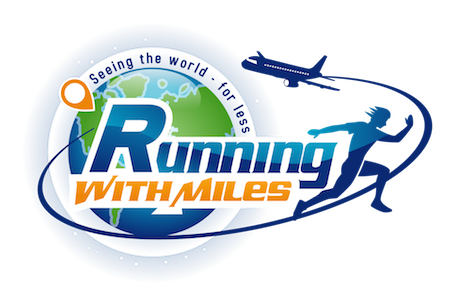I get a lot of questions from readers who ask for a lot of answers to basic questions. I had been intending for a while to add a Beginner Guide tab to the menu so each of the Back to the Basics will find their way into the tab. If you have basic questions that you would like answered, feel free to ask so they can be included here!
Back the Basics – Understanding Miles and Points
Miles and points are a great way to travel! You probably hear friends talk about how they went on this trip and it didn’t cost them anything at all or talked to a fellow runner who was able to run that marathon on your dream list and they were able to do so because of miles. Or maybe you have just applied for your first miles/points credit card and you are trying to figure out what to do next. Hopefully we can help you in your miles and points journey!
Miles or Points?
Believe it or not, a lot of confusion stems from the name of the currency used in award travel – are these things called miles or points? Are they interchangeable? What is the difference?
Miles
Miles are earned within the various airline frequent flyer programs. Miles can be earned by credit card bonuses, credit card spending, actual flying, airline shopping portals, and assorted promotions. Miles earned are then accrued in a account which a person signs up for directly with the airline. These miles can then be redeemed for flights for yourself, your family members, or your friends. Here are some answers to popular questions about miles:
- Why does it cost 25,000 miles for me to fly from New York City to Orlando? It is less than 1,000 miles away! Unfortunately, miles required for award travel is not (normally) tied to the distance. Just because it is 1,000 miles away does not mean it only takes 1,000 miles to fly there. If you flew there on a paid ticket, you would earn 1,000 miles that you could put towards redeeming an award ticket back to Orlando – but that round-trip award ticket will cost you 25,000 miles. This is because (many) airlines operate on a zone-based award chart. So, for tickets within the US/Canada, (most) airlines will charge you 25,000 miles for the US zone. Similarly for tickets from the US-Europe, (most) airlines will charge you 60,000 miles. There are some exceptions, which we will discuss in a later post.
- Can I give my miles to a family member? It is great that you have such generosity, but you cannot do that unless you pay a transfer fee. This fee is a flat fee + a cost per mile of what you want to transfer. The cost per mile is (without bonuses) normally at 1 cent per mile or a little more. That is not cheap! So, to transfer 30,000 miles, you will pay $330 (because of the transfer fee) to do so.
- Can I transfer miles from one airline to another airline? No, you cannot move miles around between airlines.
- I thought that it cost 25,000 miles to fly from New York City to San Francisco – how come it is telling me it is 40,000? 25,000 miles is the lowest a domestic ticket would cost (with the exception of some close-in redemptions with some airlines – more on this later). That is for the lowest availability tier of award miles. As the flight books up and seats reserved for award travel book up, the low availability tickets disappear and are replaced with mid-tier and then high-tier award ticket pricing. These high-tier tickets can be more than double the lowest requirement! This is why it is a good idea to shop early and often for your award tickets if you plan on traveling to someplace popular at a popular time of year.
Points
Points are typically earned within credit card programs themselves or hotels. To confuse things even further, there are a few different airlines that also refer to their award currency as points. The different categories of redemption pools that call their currencies points are:
- Flexible Point Programs – The major banks each have their own type of travel currency. These points are responsible for creating confusion that leads to some of the questions under the Miles heading as well as others. The different banks and programs are: ThankYou Points (Citibank), Ultimate Rewards (Chase), Membership Rewards (American Express), Arrival Points (not their official name, but better than nothing! Barclay Bank), Flexperk Points (US Bank). Three of those are points that are redeemed toward travel and not (currently) transferable to airline and hotel programs. Two of those programs offer the greatest flexibility – Chase (Ultimate Rewards) and American Express (Membership Rewards). These programs can transfer their points into various hotel points and airline miles. It is due to these transfers that some people wonder if miles can be transferred. No, points from these flexible programs are the points that can be transferred to other airline and hotel programs – it cannot be done from airline programs.
- Hotel Programs – Hotel programs are the ones that typically are called point programs. Their points are used for award nights at their various hotels. The hotel award system itself can be very confusing because, unlike the airline industry, there is not consistency with what the various hotel chains charge for the various hotels.
- Some Airline Programs – There are a few airlines that call their award currency points (or similar) – some of these are AirTran/Southwest, JetBlue, and British Airways. An easy way to tell which airline systems refer to their currency as points is that they are normally the airlines that do not have zone-based award systems. In the case of AirTran/Southwest and JetBlue, they are revenue-based programs. This means that the value of their points is directly tied to the price of the ticket. In the case of British Airways and their Avios (really just Avios, but some people add the points name to it)points, they are a distance-based award program. So, the shorter the distance, the fewer points required. Note: this method of telling which are points or miles does not apply to all airlines but can be used for the airlines which are most familiar to the US-based traveler.
For something to confuse you even more (in an effort to confuse you less!) is that many hotels actually let you transfer points to airline mile programs! Many times, these transfers are not great, but there are some bonuses that come out from time to time that may make sense for your particular earning strategy. You also have the Starwood Preferred Guest program that actually lets you transfer their points to many airlines at no fee and even gives you a bonus if you transfer 20,000 points in a block (a 5,000 mile bonus)! It is not hard to see why people get confused! Hopefully, this little guide helped to clear some things up for you!








[…] Back to the Basics – Understanding Miles and Points […]
[…] is the limit. This is because there are several transfer partners that will allow you to turn their miles/points into Hilton HHonor points – many times at a 1:2 ratio (in other words, doubling the points […]